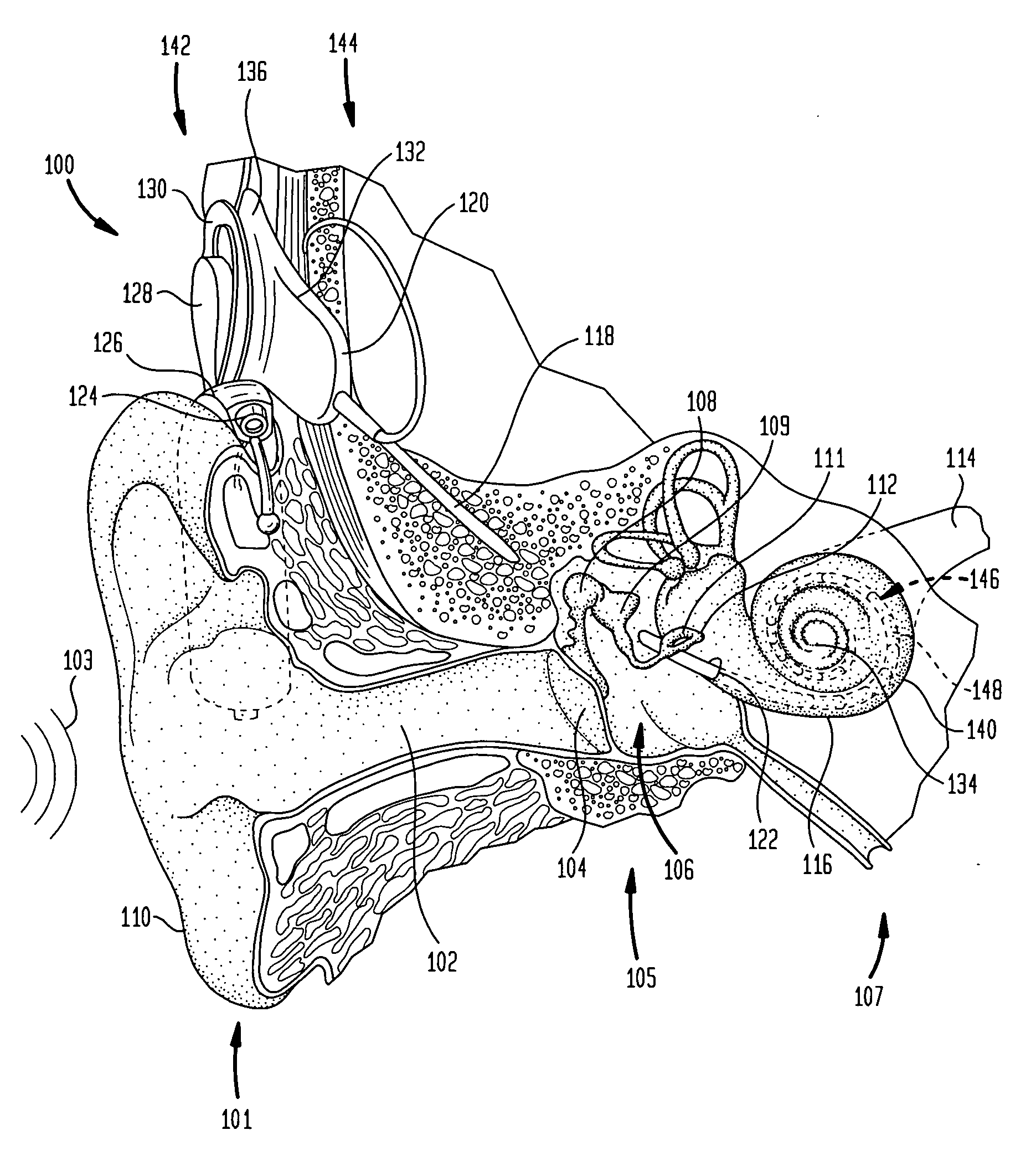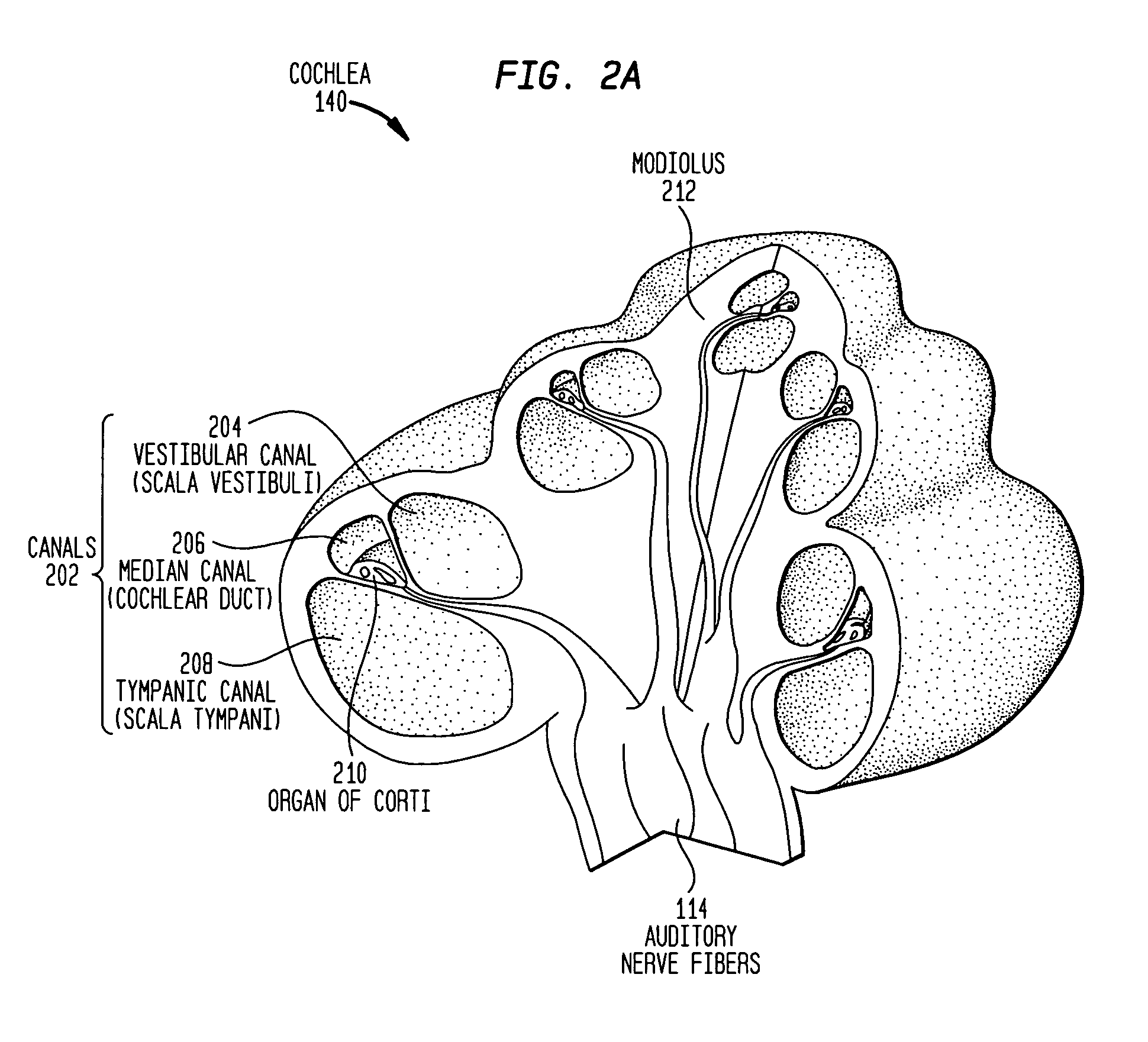Electrode assembly for a stimulating medical device
a technology of electrodes and medical devices, applied in the field of stimulating medical devices, can solve the problems of conductive hearing loss, impeded normal mechanical pathways for sound to reach the hair cells in the cochlea, and impaired hearing, so as to facilitate intra- and extra-cochlea atraumatic implantation, minimize adverse effects on natural auditory functioning, and avoid damage to the delicate structure of the cochlea
- Summary
- Abstract
- Description
- Claims
- Application Information
AI Technical Summary
Benefits of technology
Problems solved by technology
Method used
Image
Examples
Embodiment Construction
[0037]Embodiments of the present invention are generally directed to an electrode assembly comprising a low-profile, low-volume elongate electrode carrier and a corresponding guide tube for introducing the carrier into the cochlea to place electrodes disposed at the distal end of the carrier at desired locations along the tonotopically-mapped cochlea. The electrode assembly of the present invention facilitates intra- and extra-cochlea atraumatic implantation of the unobtrusive electrode carrier of the present invention thereby minimizing adverse impact to natural auditory functioning. For example, as will be described in detail below, an electrode assembly of the present invention may be utilized to implant a carrier of the present invention into the scala tympani without damaging the delicate structures of the cochlea and without interfering with the natural hydrodynamic nature of the cochlea such as the natural flow of perilymph in the cochlea canals. In one particular embodiment,...
PUM
 Login to View More
Login to View More Abstract
Description
Claims
Application Information
 Login to View More
Login to View More - R&D
- Intellectual Property
- Life Sciences
- Materials
- Tech Scout
- Unparalleled Data Quality
- Higher Quality Content
- 60% Fewer Hallucinations
Browse by: Latest US Patents, China's latest patents, Technical Efficacy Thesaurus, Application Domain, Technology Topic, Popular Technical Reports.
© 2025 PatSnap. All rights reserved.Legal|Privacy policy|Modern Slavery Act Transparency Statement|Sitemap|About US| Contact US: help@patsnap.com



